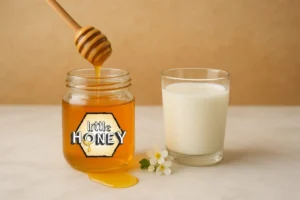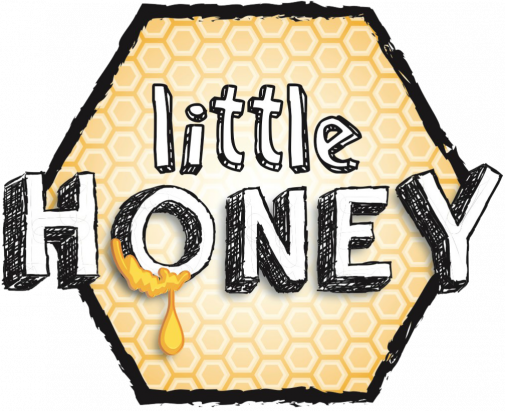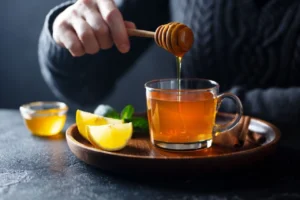
Sidr Honey Straws Specialist Singapore
Which is better, Manuka honey or Sidr honey?
Introduction
Let’s be honest, when it comes to natural remedies, honey steals the spotlight. Whether you’re battling a sore throat, looking for an immunity boost, or just want something sweet that won’t send your sugar levels on a rollercoaster, honey has your back.
But with the rise of premium varieties, a showdown was inevitable: Manuka honey or Sidr honey. One’s a Kiwi celebrity with a science-backed stamp of approval; the other’s a golden treasure rooted in ancient Middle Eastern traditions.
So, which one should you reach for? This article breaks it down—origin, health perks, taste, price, and everything in between—to help you decide.
Origin and Source
Manuka Honey
Manuka honey hails from New Zealand, harvested from the Leptospermum scoparium shrub, also known as the Manuka bush. Think of it as the wine of the honey world—it even has a Protected Origin Status, like Champagne.
Its production is heavily regulated, and only honey that passes strict testing gets that prized UMF certification (more on that soon).
Sidr Honey
In contrast, Sidr honey comes from the sacred Sidr tree (Ziziphus spina-christi). It grows wild in Yemen, Pakistan, and parts of the Middle East.
Unlike Manuka’s lab-coated production, Sidr is often harvested traditionally, by hand, in remote mountainous areas. You could say it’s nature in its purest form—untouched, unbothered, unbottled (well, eventually bottled).
Nutritional Profile and Composition
Manuka
This honey’s superpower? Methylglyoxal (MGO)—a compound with kick-butt antibacterial properties. It’s measured by the UMF rating system, which considers MGO levels along with other healing markers.
That means not all Manuka honeys are created equal. A UMF 10+ is solid. A UMF 20+? Basically liquid gold.
Sidr
Sidr honey may not boast a globally recognized rating system, but don’t sleep on its benefits. It’s loaded with antioxidants, minerals, and flavonoids. Plus, it’s naturally alkaline, which helps neutralize acidity in the body.
Many people swear it’s the best natural honey for overall wellness, kind of like that underrated indie band before they blew up.
Health Benefits
Manuka
Let’s get clinical for a sec. Manuka honey is often used in hospitals for wound healing. Yep, it’s that powerful. It also works wonders on sore throats, acne, and even viral infections.
Its antibacterial and antiviral strength makes it ideal for external use or when you need something stronger than your average raw honey.
Sidr
Now, if you’re more into keeping your insides happy, Sidr honey is your guy. It’s a staple in traditional medicine, used for everything from digestive health and liver support to fertility treatments and ulcer relief.
Oh, and let’s not forget its immune boosting properties. It’s like having a gentle guardian angel for your gut.
Taste and Texture
Manuka
If you’re expecting candy-like sweetness, prepare to be surprised. Manuka is earthy, slightly bitter, and has a thick, creamy texture. Some say it’s an acquired taste—like black coffee or olives.
Sidr
Sidr honey, on the other hand, is all about indulgence. Think buttery, fruity, and rich with a sweet aftertaste that lingers pleasantly.
It’s smoother, often golden or dark amber in color, and just plain luxurious. If Manuka is the strong, silent type, Sidr is the charismatic crowd-pleaser.
Purity and Production Practices
This is where it gets interesting.
Manuka
Thanks to strict government standards, Manuka honey is often certified honey, tested for its UMF rating and purity. The production process is clinical, ensuring consistency and safety.
Sidr
Meanwhile, Sidr honey is usually harvested by local beekeepers using traditional, organic methods. That means minimal industrial intervention and a product that’s as close to nature as it gets.
At Little Honey in Singapore, we’re proud to offer organic honey that’s carefully sourced to retain all its natural goodness.
Pricing and Availability
Let’s talk dollars and cents.
Manuka
Manuka honey is famously pricey. Why? Because of the high demand, certification costs, and limited availability from New Zealand. A small jar can easily set you back $100 or more.
Sidr
Sidr honey isn’t cheap either—it’s considered a premium honey—but the price tends to vary depending on origin, harvest, and purity.
At Little Honey, we ensure you’re getting top-quality Sidr honey in Singapore without the boutique price tag.
Verdict: Which One is Better?
Well… it depends.
If you’re looking for clinical-grade healing, especially for wound healing or skin treatments, Manuka honey might be your best bet.
But if you’re after something for daily wellness, gut health, or just a better-tasting spoonful of goodness, Sidr honey is hard to beat.
Here’s a quick breakdown:
| Feature | Manuka Honey | Sidr Honey |
| Origin | New Zealand | Yemen, Pakistan, Middle East |
| Key Compound | MGO (UMF Rated) | Antioxidants, Flavonoids |
| Health Focus | Topical + Clinical | Digestive + Immune Support |
| Taste | Earthy, Bitter | Buttery, Fruity |
| Price | High | Premium, Variable |
| Regulation | Highly Certified | Traditionally Harvested |
Our final recommendation? Use Sidr honey daily for digestion, immune support, and natural sweetness. Keep Manuka around for skin flare-ups and seasonal sore throats.
Final Recommendation
Sidr honey is a natural powerhouse that deserves a permanent spot in your kitchen and wellness kit. Whether you’re looking to support digestion, fight inflammation, or simply enjoy a luxurious spoonful of nature’s best, Sidr delivers—with purity, tradition, and taste that’s hard to beat.
Choose Sidr. Choose better health.
Benefits of Sidr Honey
Wondering what makes Sidr honey so special? This golden nectar isn’t just delicious—it’s a natural healer that’s been trusted for generations. Here’s why it deserves a permanent spot in your pantry:
1. Boosts Immunity Naturally
Packed with antioxidants and enzymes, Sidr honey helps strengthen your immune system and ward off infections without relying on artificial supplements.
2. Soothes the Digestive System
Sidr honey is known to ease indigestion, bloating, and ulcers, making it a gentle and effective remedy for gut health. It’s naturally alkaline, helping to balance acidity.
3. Supports Liver Health
In traditional medicine, it’s been used to detoxify the liver and promote its function—ideal for those looking to cleanse and refresh their system.
4. Wound Healing & Anti-inflammatory
Thanks to its antibacterial and anti-inflammatory properties, Sidr honey is also applied to minor wounds, burns, and skin irritations to speed up healing.
5. Rich in Nutrients & Flavonoids
Loaded with minerals, vitamins, and plant-based compounds, Sidr honey nourishes your body at a cellular level, offering beauty and health benefits from the inside out.
6. Daily Energy Booster
With its natural sugars and complex composition, just a spoonful in the morning can give you a clean, sustained energy boost—no caffeine crash needed!
Read in detail: Is a Spoonful of Honey a Day Good for You?
Conclusion
When it comes to choosing a honey that delivers both taste and wellness, Sidr honey stands in a league of its own. Revered for centuries in traditional medicine, it’s more than just a sweet treat—it’s a natural remedy rich in antioxidants, minerals, and healing properties. From supporting digestion to boosting immunity, Sidr honey offers powerful daily nourishment wrapped in golden, buttery flavor.
If you’re in Singapore, you’re in luck—Little Honey brings you authentic, premium Sidr honey, wild-harvested with care and untouched by modern processing. It’s pure, potent, and ready to be part of your wellness routine.
Share this post :
Categories
Latest Post

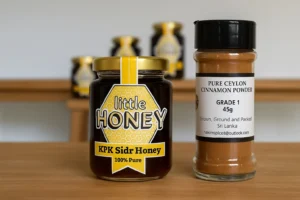
Benefits of Kashmiri Sidr Honey With Ceylon Cinnamon Powder
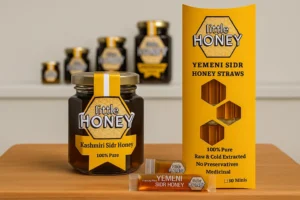
Top 6 Reasons Why You Should Choose Sidr Honey Singapore
